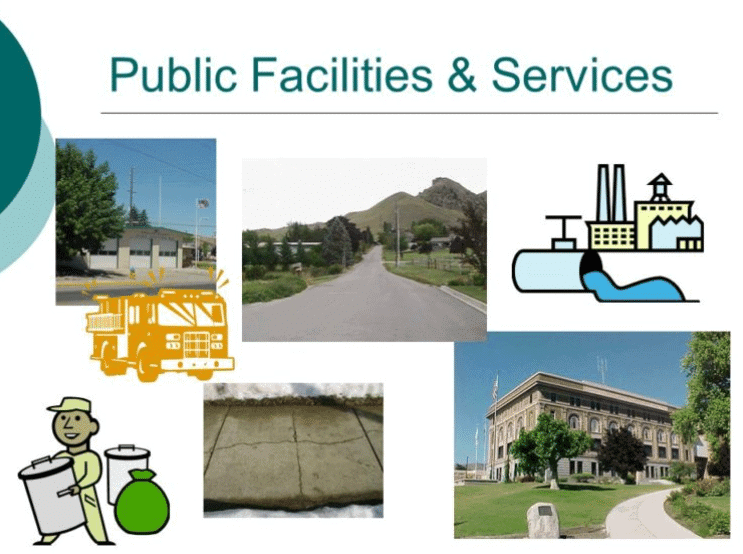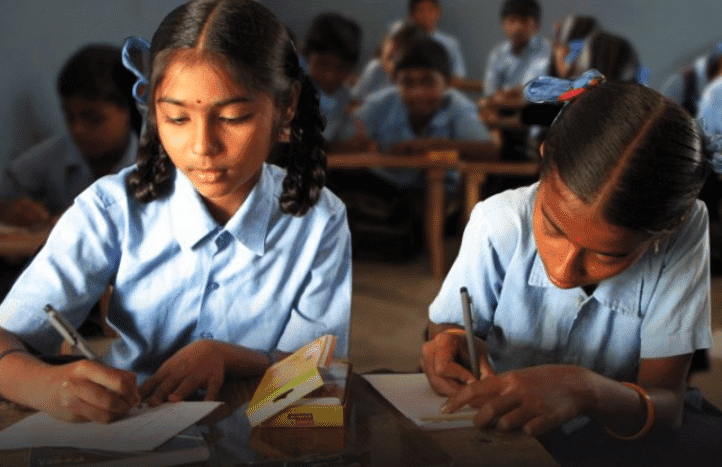Very Short, Short and Long Answers - Public Facilities | NCERT Summary: UPSC PDF Download
Very Short Answer Type Questions
Q.1. Why do the residents of Subramanian’s Apartments in Mylapore use borewell water in their toilets for washing?Ans. It is because borewell water is brackish.
Q.2. How do they manage water for other uses?
Ans. For other uses, they purchase water from tankers.
Q.3. How do they manage water for drinking?
Ans. For drinking water , they have installed water purification systems in their homes.
Q.4. What is the position of water availability in the slum area where Padma lives?
Ans. For 30 hutments there is a common tap at one corner, in which water comes from a borewell for 20 minutes twice daily.
Q.5. How can deaths due to diarrhoea and dysentery be prevented? [Imp.]
Ans. By making safe drinking water accessible to all.
Q.6. What does Right to Water mean? [V.Imp.]
Ans. It means that it is the right of every person, whether rich or poor, to have sufficient amounts of water to fulfil his/her daily needs at a price that he/she can afford.
Q.7. What are known as public facilities? [V. Imp.]
Ans. Facilities like water, electricity, public transport, schools and colleges, healthcare, and sanitation are known as public facilities.
Q.8. Write the important characteristic of a public facility.
Ans. Once it is provided, its benefits can be shared by many people.
Q.9. Whose responsibility is this to ensure public facilities to everyone? [V.Imp.]
Ans. This is the responsibility of the government to ensure public facilities to everyone.
Q.10.What are the sources of water in rural areas?
Ans. In rural areas the sources of water are—wells, handpumps, ponds and sometimes overhead tanks.
Short Answer Type Questions
Q.1. Why should the government bear the responsibility to provide public facilities to everyone? [V. Imp.]Ans. If private companies are given the responsibility to provide public facilities such as water, they will charge more. In such a situation only some people can afford to buy water. Thus, even though private companies are providing the facility of water, but this facility is not available to all at an affordable rate. If we go by the rule that people will get as much as they can pay for them many people who cannot afford to pay for such facilities will be deprived of the opportunity to live a decent life. Obviously, this is not a desirable option. Public facilities relate to our basic needs. The Right to Life that the Constitution guarantees is for all person living in this country. Therefore, it should be the government’s responsibility to provide public facilities to all.
Q.2. How can you say that there are great inequalities in water use? [V. Imp.]
Ans. It is a fact that there are great inequalities in water use. The supply of water per person in an urban area in India should be about 135 litres (about seven buckets) per day. It is a standard set by the Urban Water Commission. But people living in slum areas have to do with less than 20 litres (one bucket) a day per person. At the same time people living in luxury hotels may consume as much as 1,600 litres (80 buckets) of water per day.
Q.3. Some people are of the opinion that private companies should be allowed to take over the task of water supply. Why do they opine so?
Ans. Some people opine that since the government is unable to supply the amount of water that is needed and many of the municipal water departments are running at a loss, they should allow private companies to take over the task of water supply. According to them, private companies can perform better.
Q.4. What do you know about the Right to Education? What have activists and scholars working on education found out?
Ans. Our Constitution guarantees the Right to Education for all children between the ages of 6 to 14 years. The important aspect of this Right is to make available equal schooling facilities to all children. However, activists and scholars working on education are of different opinion. They have documented the fact that schooling in India continued to be highly unequal.
Q.5. In some parts of the country water supply has been improved. Explain giving examples of Mumbai, Hydrabad and Chennai.
Ans. Mumbai. The water supply department in Mumbai raises enough money through water charges to cover its expenses on supplying water. In Hyderabad, a recent report shows that the department has increased coverage and improved performance in revenue collection.
In Che nnai, the department has taken several initiatives for harvesting rainwater to increase the level of ground water. It has also used the services of private companies for transporting and distributing water.
Q.6. Write a short note on ‘Sulabh’.
Ans. Sulabh is a non-government organisation (NGO). It has been working for three decades to address the problems of sanitation which the low-caste and low-income group of people are facing. It has constructed more than 7,500 public toilet blocks and 1.2 milion private toilets. Now 10 million people have got access to sanitation. Usually the poor working class people use sulabh facilities.
Sulabh enters into contracts with municipalities or other local authorities to construct toilet blocks with governement funds. Local authorities provide land and fund, for setting up the services. So far maintenance costs are related, they are financed through user charges.
Q.7. Discuss the role of the government in regard to public facilities.
Ans. Public facilities are associated with our basic needs. Our Constitution recognises many of the public facilities as being a part of the Right to Life. Therefore, the government must see that these rights are protected so that everyone can lead a decent life. But its efforts are not successful to some extent. There is a shortage in supply and there are inequalities in distribution. Metros and large cities are not in very bad condition but towns and villages are underprovided. In comparison to wealthy localities, the poorer localities are underserviced.
The government is expected to take steps in order to make all the public facilities accessible to everyone. So far we are concerned, we must cooperate with the government
Long Answer Type Questions
Q.1. Compare the availability of water in different regions of Chennai. [V. Imp.]
Ans. Anna Nagar in Chennai is a posh area. It looks lush green and green with lawns maintained by a enough spraying of water. Bungalows here have tap water for major part of the day.The Subramanian’s Apartments in Mylapore faces water crisis. Like most areas of the city this area too gets municipal water once in two days. A parivate borewell to meets the water needs of some of the residents.
Although borewell water is brackish, the residents are thankful to it because they use it in their toilets and for washing. For other uses, they purchase water from tankers. For drinking water, they have installed water purification system in their homes. The houses in Madipakkam are under acute water crisis. People get water once in four days. For drinking they purchase bottled water.
The slum area near Sadapet is a cluster of hutments without a tap connection. For 30 hutments there is a common tap at one corner, in which water comes from a borewell for 20 minutes twice daily. A family gets to fill a maximum of three buckets within this time. The same water is used for washing and drinking. In summer, water flows in trickle. As a result, one family gets water only at the cost of another. People have to wait long hours to get water from tankers.
|
666 docs
|
FAQs on Very Short, Short and Long Answers - Public Facilities - NCERT Summary: UPSC
| 1. What are public facilities? |  |
| 2. How are public facilities funded? |  |
| 3. How important are public facilities for a community? |  |
| 4. Are public facilities accessible to everyone? |  |
| 5. How can the public contribute to the improvement of public facilities? |  |






















